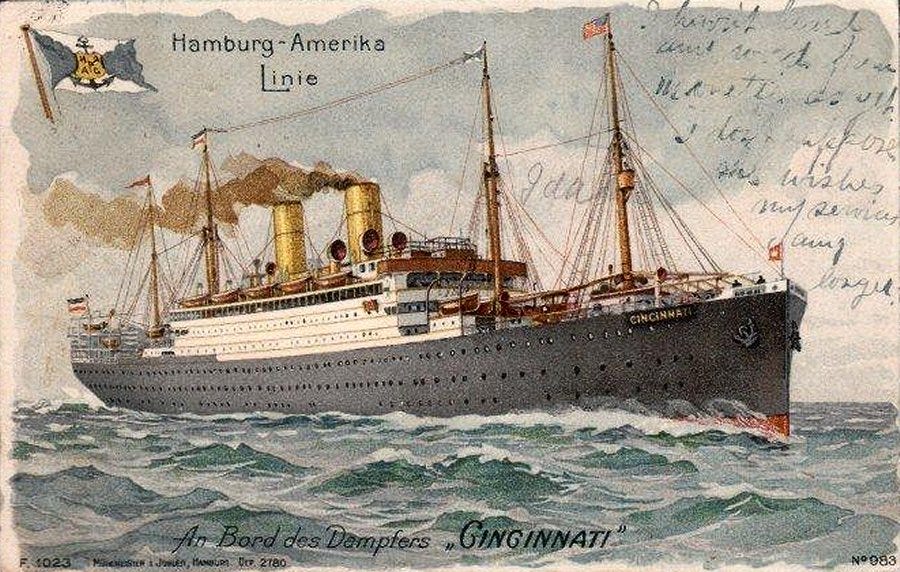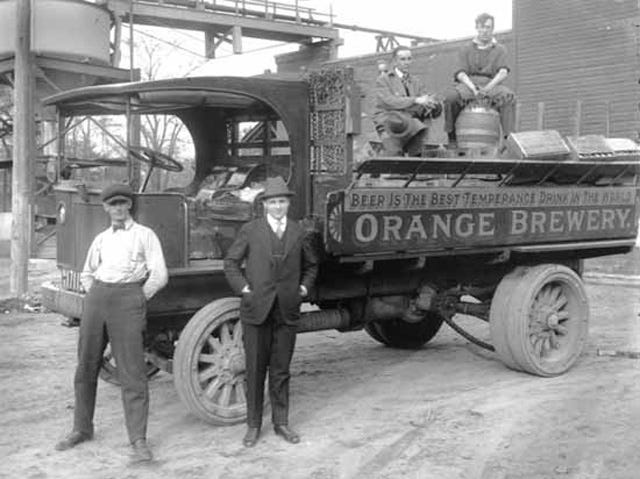Villa am Meer, Chapter 8
Hermann J. Kohl and his road to riches
Posted by joy.the.curious on Jun 16, 2010 in Villa Am Meer | 1 comment
On September 8, 1910, Hermann Joseph Kohl landed on the shores of Ellis Island in New York Harbor. He left his hometown of Schwerte, Germany, boarded the S.S. Cincinnati, and set sail for the land of the free. According to the ship manifest, he was 21 years old. His occupation… druggist.

Sidebar
Schwerte is presently located in west central Germany, just northeast of Dusseldorf in the beautiful Rhineland region. According to Wikipedia, it belongs to the present day state of North Rhine-Westphalia (“western plain”), usually shortened to NRW, and is the westernmost, the most populous, and the economically most powerful state of Germany.
However, back in 1910, Schwerte, Westphalia belonged to the Kingdom of Prussia, which included all of northern Germany, western Russia, and Poland (see map at right). The kingdom was ruled by the Hohenzollern dynasty, and most notably, by Prussian Prime Minister Otto von Bismarck who unified the German states in 1870, forming the basis of the German Reich in 1871.
At age 21, every male who lived within the Prussian Empire was subject to “conscription,” or what we call “the draft.” They were required to serve three full years of active military duty, followed by another 4-5 in the reserve. Once their reserve duty was finished, they became a member of the “Landwehr” for another 2-5 years, similar to our National Guard, and could be called up for active duty during times of war.
*End Sidebar*

From his obituary, we know that Hermann Kohl received a Ph.D. degree in chemistry from Heidelberg University. Heidelberg was located in southwest Germany, outside the Prussian Empire. So, at age 21, Kohl would have been faced with the dilemma of returning to Prussia to serve his military duty, or to take his newly-aquired chemistry degree and head for America. It appears he chose the latter.
By the summer of 1914, World War I had begun in Europe, triggered by the assassination of Archduke Franz Ferdinand of Austria, the heir to the throne of Austria-Hungary. Anti-German sentiment was on the rise in America, and many German immigrants were anxious to become naturalized citizens of the U.S., denouncing their loyalty to their former country.
The naturalization process took five years, and lucky for Kohl, he had filed his “first papers” soon after arriving in the U.S. “†on July 31, 1911, at Ellis Island, NY.
Sidebar
The Naturalization Process (source: Ancestry.com)
The first responsibility for an immigrant wishing to become an official U.S. citizen was to complete a Declaration of Intention. These papers are sometimes called First Papers since they are the first forms to be completed in the naturalization process. Generally these papers were filled out fairly soon after an immigrant’s arrival in America. Due to some laws, there were times when certain groups of individuals were exempt from this step.
After the immigrant had completed these papers and met the residency requirement (which was usually five years), the individual was able to submit his Petition for Naturalization. Petitions are also known as Second or Final Papers because they are the second and final set of papers completed in the naturalization process.
So, on April 26, 1916, Hermann Joseph Kohl renounced his allegiance to William II, Emperor of Germany, and became an official citizen of the United States of America.
From his “final papers,” we learn some valuable information about Hermann Kohl. First, we can see he was born August 7, 1889 in Westfalen (Westphalia), Germany. He was living at 400 West 148th Street, in present day Harlem, about a mile and a half north of the famous Apollo Theater. His occupation was “pharmacist,” and by this time, he was married to his wife, Hertha Kohl, who was born in Germany.
Kohl was now 26 years old, and though he may have escaped the draft in Prussia, it still caught up with him in America. On June 5, 1917, Hermann Joseph Kohl registered for the World War I draft. He was still living at 400 West 148th Street with his wife, Hertha, and now working as a “chemist.” On the draft card, we also learn that Kohl was tall, slender, had blonde hair, blue eyes, and was not going bald. He also had all his limbs, both eyes, and wasn’t otherwise disabled. A real catch.
Three years later, Hermann and Hertha show up on the 1920 U.S. Census living at 336 Halsted Street in East Orange, New Jersey. Clearly, they are not “rolling in it” quite yet. So why the move to East Orange? Hard to say. A quick look at Wikipedia says that hatmaking had been the essential industry in East Orange, with 21 companies employing 3,700 people in 1892. But by 1921, only five firms remained.
So, what else was in East Orange, New Jersey? Beer. The Orange Brewery was constructed in 1901 by the three Winter Brothers of Pittsburgh, Pennsylvania. By the late 1890’s they were nearing capacity at their Pittsburgh facility, brewing 150,000 barrels a year. So, in 1899, the brothers sold their lucrative enterprise for over $4,500,000 to the Pittsburgh Brewing Company (PBC), packed up their profits and headed for East Orange, New Jersey.

In 1901, Michael and Wolfgang Winter built a brand new $350,000 building in East Orange and named it the Orange Brewery. The Orange Brewery ran a profitable business and had a good run until 1920, the year Prohibition hit the U.S. And while Prohibition may have been bad for the Winter brothers, it seems it was abundantly good for Mr. Hermann Kohl.
“During the ‘dry’ years in the 1920’s, the Winters for a while utilized the Orange Brewery for the production of soda water and syrup type drinks. They manufactured a champagne-like, fruit flavored, carbonated soft drink beverage known as Jo-La Cola. Also during this period they formed a corporation known as The Sugola Company of New Jersey, which was an enterprise involved with (through the brewing process) converting starches to glucose in order to produce a byproduct that served as a food additive with properties that were similar to sugar.”
And so it began… Hermann Kohl’s little flavoring and fragrance company called Norda, Inc. was founded in 1924 in Boonton, New Jersey. Eleven years later, in 1935, Kohl would be listed in the New York Times as earning one of the highest salaries in all of New York.
Oh, but wait, there’s so much more… and I haven’t even told you about my whirlwind trip to New York City last weekend!
Next time
A raid at Orange Brewery, and a messy little court case.
1 Comment
arfence | June 21, 2010 at 10:30 am
just want to let the author know that the main house is staying , the owner is not going to develop for 8-10 years as an estimate and the house is now going to be occuppied and kept origanal and restore the grounds
![[ j o y . t h e . c u r i o u s ]](https://substackcdn.com/image/fetch/$s_!UzSv!,w_80,h_80,c_fill,f_auto,q_auto:good,fl_progressive:steep,g_auto/https%3A%2F%2Fsubstack-post-media.s3.amazonaws.com%2Fpublic%2Fimages%2F9a3fc6e9-2c7b-49f3-a947-5510d6ac2bd3_500x500.png)
![[ j o y . t h e . c u r i o u s ]](https://substackcdn.com/image/fetch/$s_!RoQy!,e_trim:10:white/e_trim:10:transparent/h_72,c_limit,f_auto,q_auto:good,fl_progressive:steep/https%3A%2F%2Fsubstack-post-media.s3.amazonaws.com%2Fpublic%2Fimages%2Ff10a4cb8-9c26-4c77-a86d-fd0df8c2f58f_1344x256.png)

